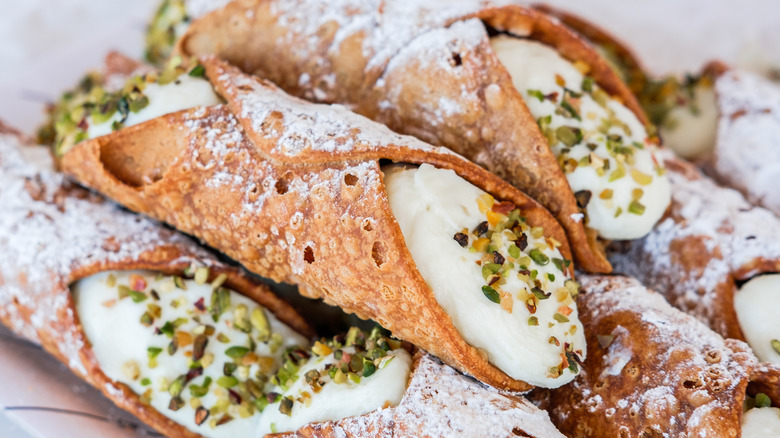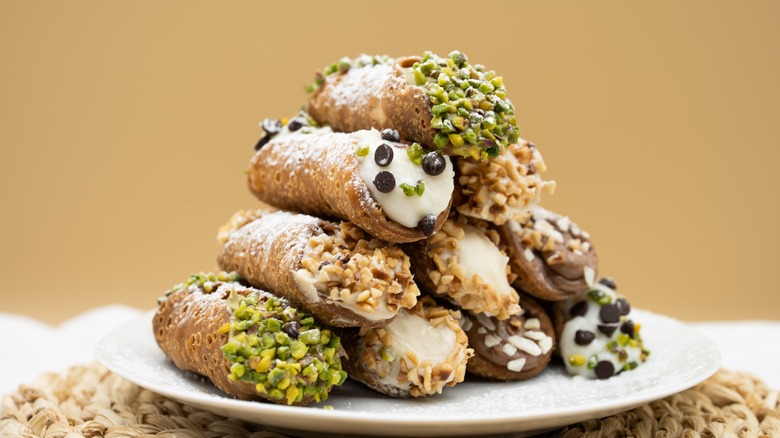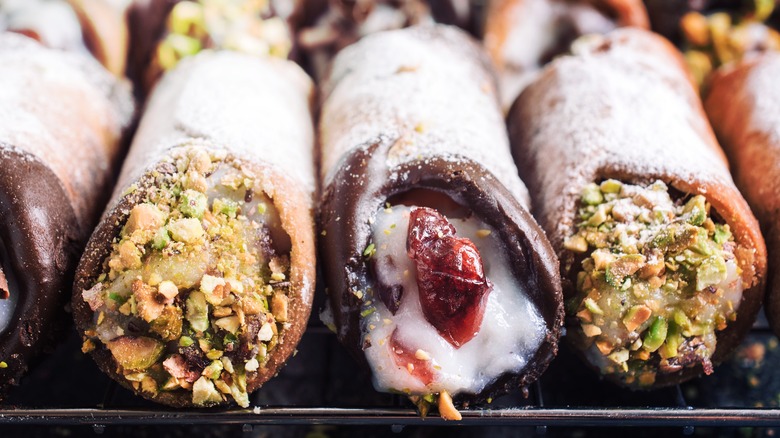The Biggest Difference Between Italian And American Cannoli
There are countless Italian dishes, but few that have been the subject of an iconic movie line. "Leave the gun; take the cannoli" from "The Godfather" is one of the more memorable bits of dialogue in film history. It's also indicative of the importance and universality of cannoli in Italian and Italian-American cuisine. There might not be a more recognizable Italian dessert in the world.
But that's just the thing: Cannoli aren't only made in Italy, but in America too, and the Italian and Italian-American versions of the decadent treat differ in a few key ways. Chief among them is the type of milk used for each. The Italian version makes use of sheep's milk, while Italian-American cannoli employs cow's milk (leading to significant distinctions in taste and consistency). But that's not the only one — while Italian-American cannoli are pretty much universally and intensely sweet, cannoli in Italy tend to have a more layered, intricate flavor thanks to the type of dairy that is used.
Sheep's milk and cow's milk ricotta have unique textures
"Milk" (and often cheese) in America typically means cow's milk, but in many other countries, "milk" and "cheese" aren't automatically assumed to be from cows. Italy itself is no exception, as sheep's milk and goat's milk are both pretty commonly found. Sheep cheese may be hard to come by in America, but it certainly isn't elsewhere (especially in Italy).
Enter ricotta cheese, the baker's friend. While both the Italian and Italian-American versions of cannoli use ricotta for their fillings, ricotta isn't by definition a cheese product from one animal or another; it can be made from any animal's milk. In Sicily, where cannoli are thought to have originated, sheep's milk ricotta is typically favored. Traditional cannoli filling in the United States, however, is most often made with cow's milk ricotta since it's the most readily available product. While both versions of the pastry have a similar production process, perhaps unsurprisingly, the flavor and texture vary between the two, with sheep's milk ricotta being tangier and sturdier (due to its lower fat content). This makes the sheep milk-based filling more likely to stay in the shell, while the Italian-American cow's milk ricotta tends to be a bit more amorphous, and thus more likely to make a mess.
The flavors are different, too
The differences don't stop there, either. Many Americans love sweet foods, so it's no surprise that Italian-American cannoli would reflect this. That cow's milk filling also contributes here, as cow's milk is milder, and so will naturally take to sweetness more than the sheep's milk variety. Italian cannoli, by contrast, are a lot more complex with their flavors, making use of significantly less sugar than the American version, as well as Marsala wine in the dough.
Savory cannoli exist, and their profile was raised by their inclusion in Season 2 of "The Bear." However, the classic cannoli in Italy is still most often a dessert pastry (just a less sweet, slightly zingier one than you'd typically find in America). Though Italian and Italian-American cannoli differ rather significantly, they're both regarded as one of the prize offerings of any Italian bakery. Whichever version you come across, you're in for a treat.


